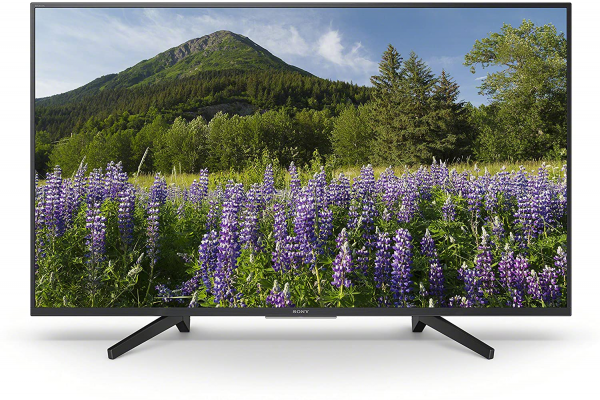Sony
Sony KD-55XF7005: what is Sony's most affordable Ultra HD TV worth
Aprox. 520€
See specificationsThe Sony Bravia KD-55XF7005 television succeeds the Sony KD-55XE7005 which had pleasantly surprised us with its well calibrated VA panel. Like its predecessor, it skips Android TV and is content with a very basic system. Let's see if this TV does as well as its predecessor.
Positive points
Good contrast.
Slight delay in display.
Startup time compared to Android TV models.
Fast and clear operating system ...
Bad points
… But quite limited.
Very reduced brightness peak for HDR.
Low viewing angles.
No microphone on the remote control.
Our review
Presentation
The Sony KD-55XF7005 TV has a 10-bit (8-bit + FRC) 50/60 Hz 55-inch panel displaying an Ultra HD definition of 3,840 x 2,160 px and an Edge-Led backlight system. The good news is that this is a VA panel on our test copy, which will result in good native contrast at the expense of viewing angles, more closed than on an IPS or Oled panel. The manufacturer announces a Motionflow XR 200 flow index, the presence of the X-Reality Pro 4K scaling engine and a 20-watt audio system. Unlike other Sony Ultra HD televisions, this model does not operate Android TV and is content with a fairly standard Smart TV system in Linux, but rather reactive as we will see.
The Sony Bravia KD-55XF7005 is sold at a price of around 750 €, but it is regularly traded at less than 700 €. It is in direct competition with the TCL 55DC760 and the Samsung 55NU7105 / 7504.
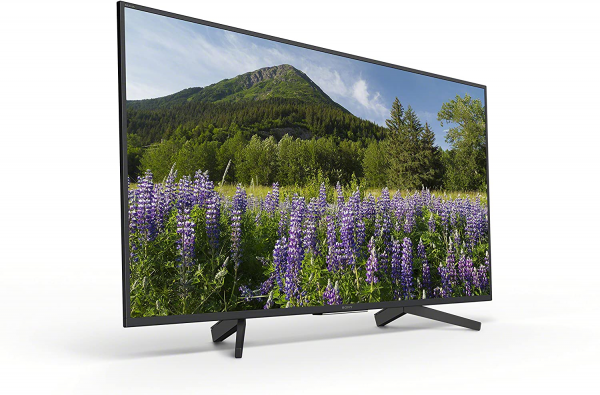
Image quality
The Sony KD-55XF7005 uses an LCD panel using VA (Vertical Alignment) technology. This technology improves native contrast, but limits viewing angles. We have measured a fairly significant average loss of brightness of 62% on the 45 ° sides, while it is limited to 59% above and below, still at 45 °.
The contrast ratio of 3,040: 1 is good enough for an LCD model. This contrast is reflected in the image by sufficiently deep blacks, even in the dark. The disappointment is rather to be sought on the side of the brightness peak (cf. HDR).
In Expert mode, the average delta E does not go below the threshold of 3, a value below which the eye no longer perceives differences between the colors displayed on the screen and the ideal colors. However, it is really the gray levels that distort the color rendering. In detail, only a few shades exceed the value of 3.
The gamma curve is far from perfect. If the curve holds up rather well at the start of the spectrum with the dark gray, it sins with the light gray or the gamma drops completely. This results in overexposed light grays.
As often, the color temperature of Sony televisions is closer to 7000 K. We measured it at 7 210 K, a value a little far from the 6 500 K reference. In addition, the curve lacks stability.
The Sony X-Reality Pro 4K processing manages the scaling of SD, HD, and Full HD content on the Ultra HD panel as well as all the motion compensation part. Scaling in cinema mode remains very gentle by smoothing out certain parts and without adding too much detail. The motion compensation motor is quite efficient with this 50 Hz panel.
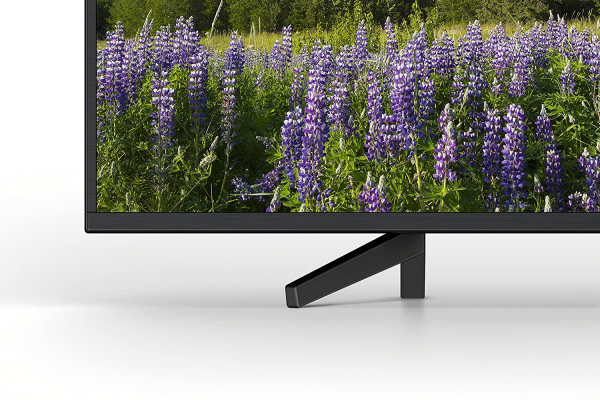
HDR
The Sony KD-55XF7005 TV is compatible with HDR10 and HLG. With a maximum HDR signal of 10,000 cd / m², the Display Tone Mapping used by Sony is far from perfectly following the reference curve in yellow. The TV hangs at 50% of the brightness and smooths the curve a lot. The peak in brightness is quite disappointing since we measured the maximum brightness at 387 cd / m², far from the 1,090 cd / m² of the Sony 65XF9005 and the 1,600 cd / m² of the Samsung 65Q9F. The Sony 55XF7005 is therefore not very comfortable with HDR content.
We also measure the color accuracy in HDR Expert mode. We measured an average delta E at 3.6, slightly above the threshold of 3, but unlike SDR, many shades exceed a delta E of 3.
The coverage of the Rec.2020 and DCI-P3 color spaces is very disappointing. The Sony 55XF7005 is content with 53% coverage of Rec.2020, when an Oled model reaches 70%; and it is even limited to 69% of the DCI-P3, when the AF9 and its Oled panel cover 93%.
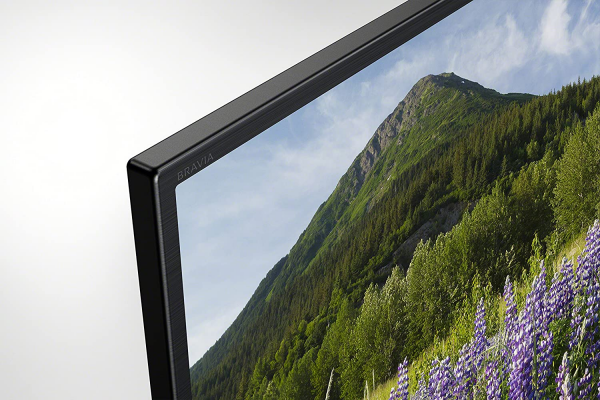
Video games
The Sony Bravia KD-55XF7005 has the lowest delay to display measured on a Sony TV with only 20 ms. The delay in the display is thus limited to a little more than one image of delay relative to the source. It is not the same bell on the side of the afterglow. With an average measurement at 17 ms, this television is very average and is very largely behind the best LCD models which go down to 11 ms like the Sony 65ZF9 or the Samsung 65Q9F. Oled models are always unbeatable with a remanence time of less than 1 ms.
The atmosphere designed by the creators of the game must be respected by the television and from now on we will evaluate the quality of color reproduction in game mode, or at least with an option which allows to reduce the delay in the display. The Sony TV is not free from defects. If it does well in SDR with a delta E less than 4; in HDR, the colors are not really satisfactory with an average delta E at 7.9.
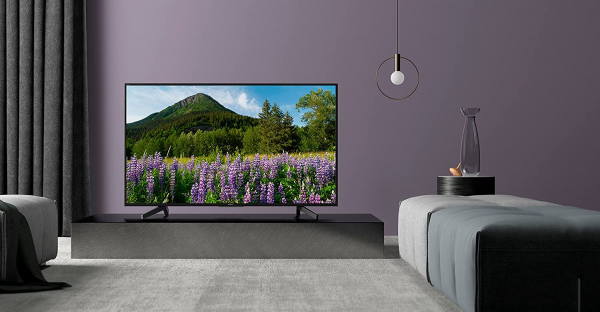
Clouding
The use of a Direct Led backlight system limits the risks of clouding, but this defect can still occur if the light distribution filter is damaged during transport. On our test copy, we also did not notice any banding problem. The homogeneity of the brightness on the panel is good, and the average difference is measured at only 12% on this 55 inch panel.
Ergonomics
The Sony 55XF7005 television is very classic. Its two eccentric feet raise the screen and thus allow the installation of a sound bar.
The filter used by Sony on its 55XF7005 television is not very effective. It filters very few reflections, so care must be taken in placing the TV in the room to avoid being bothered by reflections.
A new device now allows us to measure the quality of the anti-reflection filter on televisions, a criterion of importance according to our ...
The Sony 55XF7005 is 8 cm thick without the feet. It is thicker than an Oled model, and even an LCD TV equipped with an Edge-Led backlighting system, but it ultimately does not matter. Indeed, the size on the TV cabinet is determined by the depth of the feet. On the Sony 55XF7005, the feet occupy a depth of 35.6 cm. It is therefore just at ease on our 160 x 40 cm piece of furniture. Fortunately, its feet are very airy and free up space on the furniture.
All of the connectors are distributed over several locations at the rear. All cables pass inside the feet which have simple and efficient cable passages.
The connector of the Sony 55XF7005 consists of three HDMI 2.0b inputs, three USB ports, an Ethernet port, an optical digital audio output, a headphone output, a composite input (in yellow), a PCMCIA port (CI + common interface), a rake antenna connector and a satellite connector. It has a DVB-T / T2 (TNT), DVB-S / S2 (satellite) and DVB-C (cable) tuner. It also has 802.11a / b / g / n Wi-Fi, but it ignores Bluetooth.
This television embeds a home Smart TV system based on Linux. There are some popular applications like YouTube, Netflix, Amazon Prime Video, Rakuten TV, Arte, NRJ12, but there is no app store to add more. The capacities are therefore quite limited. In return, the system is very light and responds very well. The navigation is fluid and rather pleasant.
Unlike the Android models, which take longer to start up for the first time, this Sony TV and its lightweight Linux system start up in just 6 seconds. The extinction is instantaneous, and it takes less than 4 seconds for the exit from standby. On this point, it is a flawless for the Sony TV.
The Sony 55XF7005 comes with a very classic remote control which ignores Bluetooth connectivity and the integrated microphone. Light, it is pleasant to take in hand and the rubber buttons make no noise when pressed. It provides access to all of the TV's features and even offers multimedia keys. However, it does not offer backlit buttons, which is usual on a TV in this range.
Audio
Sony has greatly improved the audio portion of its entry level Ultra HD television. It is content with a very common audio system consisting of two 10 W speakers, but the audio rendering is better than last year on the Sony 55XE7005. The sound is far from exceptional, but it remains in the good average of what a television can offer. The system does quite well between 80 and 9,000 Hz.
The frequency response at 79 dB (A).
Consumption
With a white calibrated at 150 cd / m², the Sony 55XF7005 consumes 71 W on our test pattern, ie a relative consumption of 85 W / m². This television still consumes a little more than the Edge-Led LCD models like the Sony KD-65XE8505, record holder in the category with its 56 W / m². It also consumes more than the Samsung QE65Q9FNAT which is content with 75 W / m² despite the use of a Full Led backlight system with 480 zones.
Conclusion
The Sony KD-55XF7005 is a good SDR TV, but it has more difficulty in HDR because of a limited brightness peak. For the rest, it displays a contrasting image and fairly fair colors. It will still be difficult to win against the Samsung 55NU7105 which does better on several points (Tizen system and colorimetry).
Specifications

